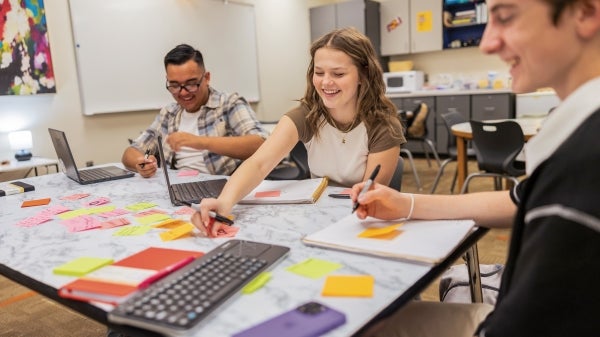Doctoral student explores how digital tools integrate into existing arts practice

Jennifer Weiler
Editor's note: This story is part of a series of profiles of notable spring 2020 graduates.
After spending several years with Arizona State University's School of Arts, Media and Engineering, Jennifer Weiler is graduating with a PhD in media arts and sciences.
Before she came to ASU, Weiler received a master’s degree in new media studio from East Tennessee State University. She said she always had a passion for art and artistic practices, and originally planned to get a degree in art studio. Then she switched to art history. Then she developed an interest in computer programming. It was then that she realized that understanding new technologies and their uses in the creative and artistic industry is what she wanted to spend her time studying.
“After taking an art history class I became so interested in sort of the context and the cultural influences and making works that I switched to art history as my undergrad degree,” she said. “And then that led me to want to learn more about how the processes and current levels of technology affected what sort of works are being created now and would be created in the future and that sort of led me on the path to continuing my education and eventually pursuing a PhD.”
At ASU, her focus has been exploring how 3D printing systems and other digital tools can be integrated into existing arts practice.
After graduation, Weiler plans on continuing to teach others about new emerging digital fabrication techniques, as a college professor or museum curator.
Question: Why did you choose ASU?
Answer: I chose ASU because of their advanced fabrication facilities and commitment to interdisciplinary collaboration.
Q: What’s something you learned while at ASU — in the classroom or otherwise — that surprised you or changed your perspective?
A: I am constantly surprised and impressed by the dedication of ASU undergraduates. During my time as a teaching assistant, I was often helping students who were being introduced to complicated software or computer programming for the first time, and I am so proud of them and the progress they made through the semester.
Q: If someone gave you $40 million to solve one problem on our planet, what would you tackle?
A: Personally, I would want to spend the money preserving and restoring historical sites and art objects. However, I would probably choose to give the money to help fight world hunger or for disaster relief, since things can be replaced but people cannot.
More Arts, humanities and education
Illuminating legacy at ASU
In 2020, the ASU Art Museum unveiled a groundbreaking installation, "Point Cloud (ASU)," by renowned artist Leo Villareal. The…

Name change for ASU's Mary Lou Fulton Teachers College reflects college's mission
Arizona State University’s Mary Lou Fulton Teachers College has a new name: the Mary Lou Fulton College for Teaching and Learning…

Exhibit to feature artwork inspired by oral histories from Arizona's oldest botanical garden
Though it is Arizona's largest botanical garden and has been an established touchstone of the community for more than 100 years,…